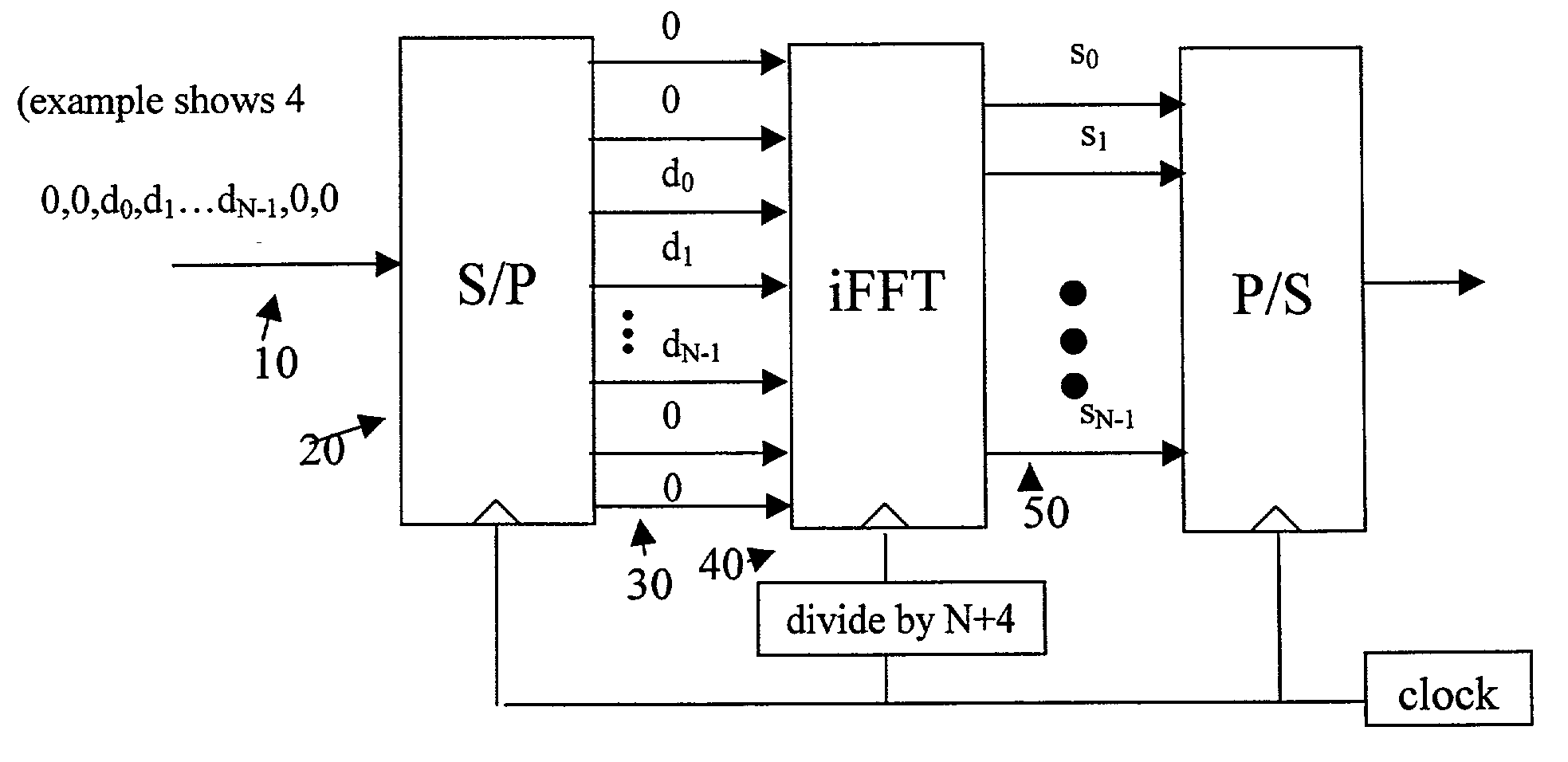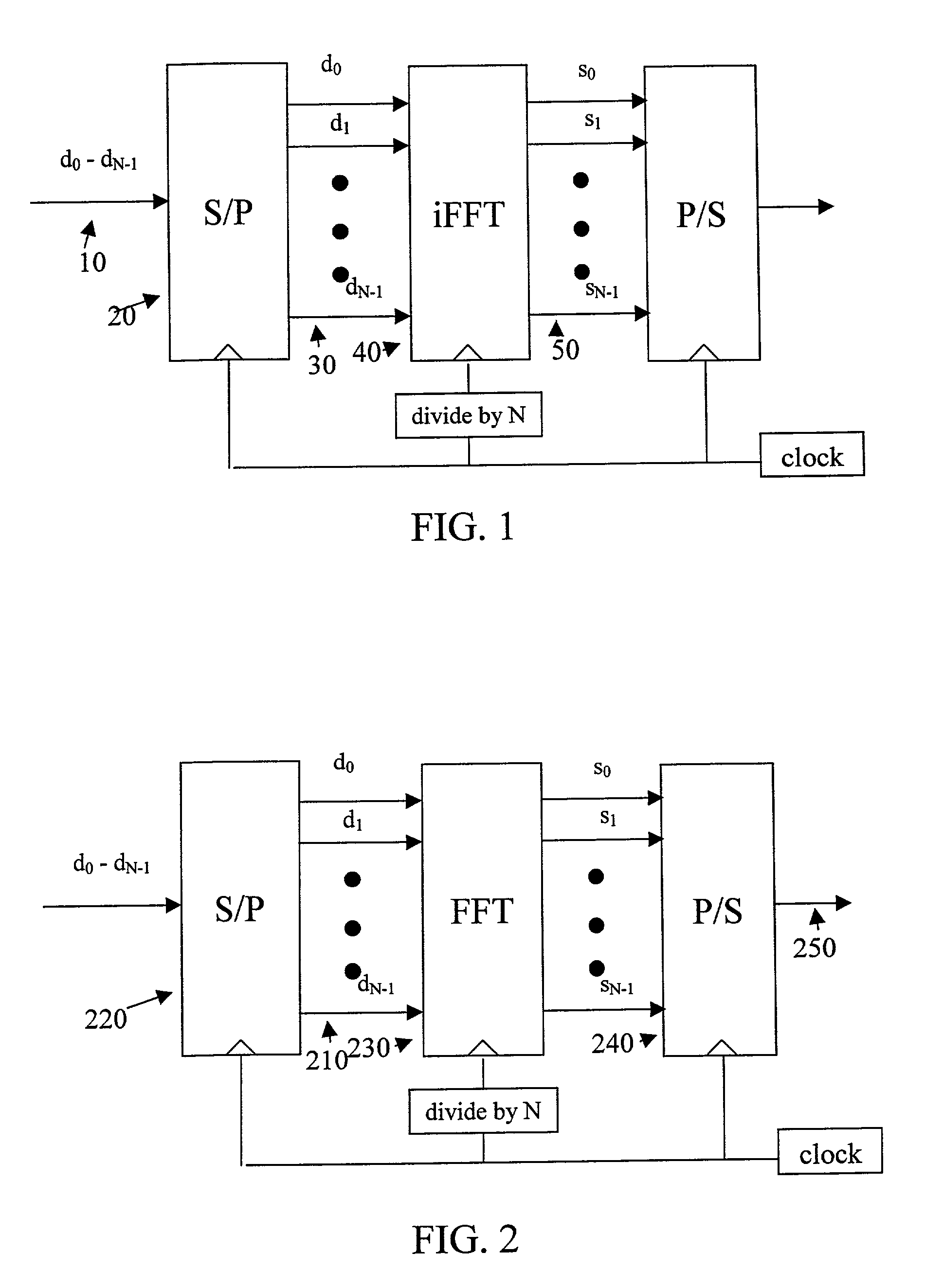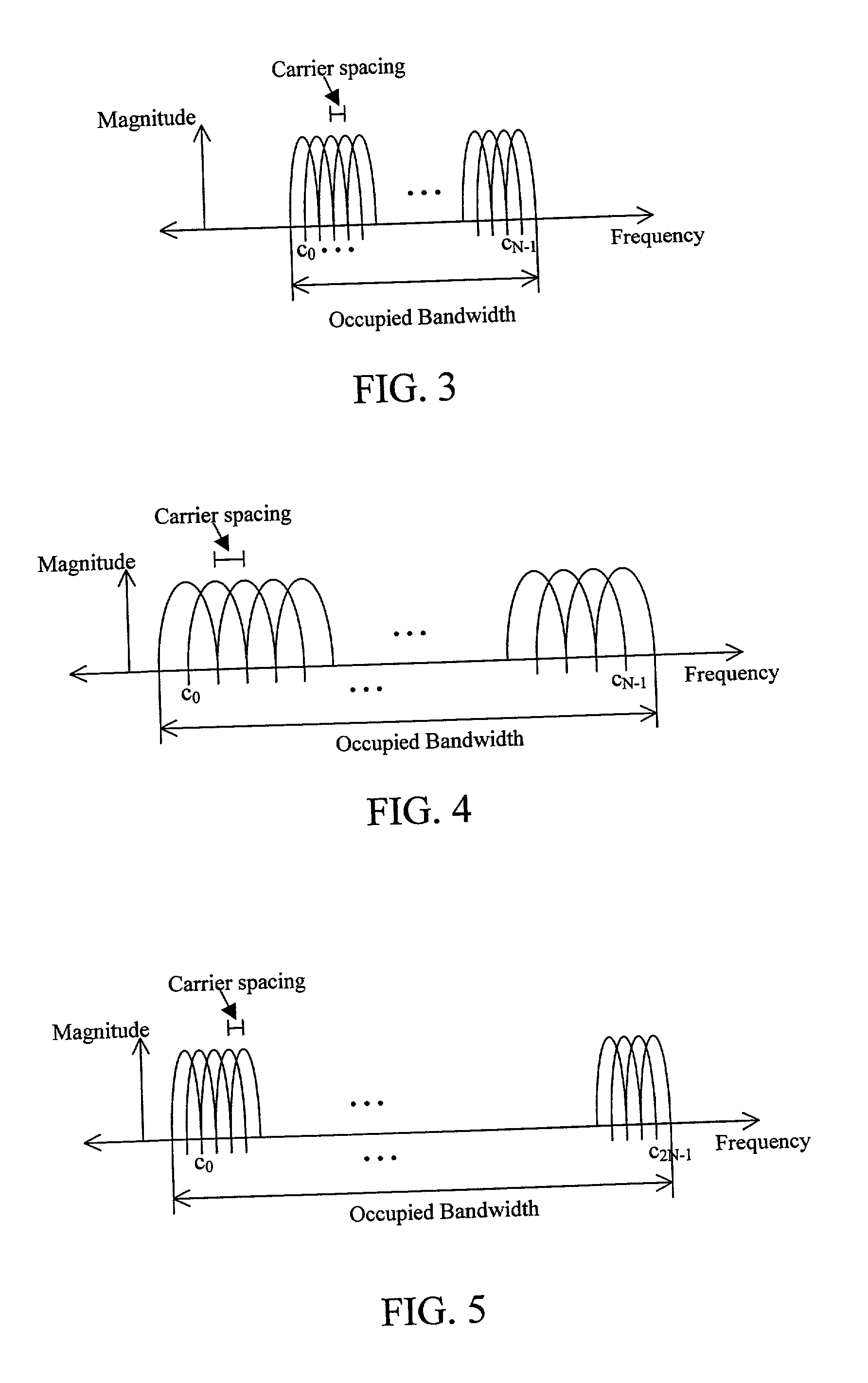Multi-carrier communication systems employing variable symbol rates and number of carriers
a communication system and carrier technology, applied in the field of communication systems and networks, can solve the problems of difficult to determine channel details, inability to adapt multi-carrier transmission, and complex modulation constellations
- Summary
- Abstract
- Description
- Claims
- Application Information
AI Technical Summary
Problems solved by technology
Method used
Image
Examples
Embodiment Construction
[0030] FIG. 4 shows the transmitted spectrum of an OFDM signal in which the symbol rate has been doubled in comparison to the one shown in FIG. 3. The carrier spacing has doubled, as has the overall occupied bandwidth. Such a signal would be able to transmit at twice the data rate compared to the system in FIG. 3. However, since the symbol rate has doubled and therefore the symbol duration halved, it would be more susceptible to multi-path echoes.
[0031] FIG. 5 shows the transmitted spectrum of an OFDM signal in which the number of carriers is doubled, but the symbol time remains constant. This approach also doubles the occupied bandwidth and the data rate relative to FIG. 3. However, since the symbol rate is unchanged, it remains resistant to long multi-path echoes. Unfortunately, this approach requires more complex iFFT and FFT processors which consume more power and are more expensive to build.
[0032] For a given channel, there is an optimal occupied bandwidth, symbol rate, and the...
PUM
 Login to View More
Login to View More Abstract
Description
Claims
Application Information
 Login to View More
Login to View More - R&D
- Intellectual Property
- Life Sciences
- Materials
- Tech Scout
- Unparalleled Data Quality
- Higher Quality Content
- 60% Fewer Hallucinations
Browse by: Latest US Patents, China's latest patents, Technical Efficacy Thesaurus, Application Domain, Technology Topic, Popular Technical Reports.
© 2025 PatSnap. All rights reserved.Legal|Privacy policy|Modern Slavery Act Transparency Statement|Sitemap|About US| Contact US: help@patsnap.com



